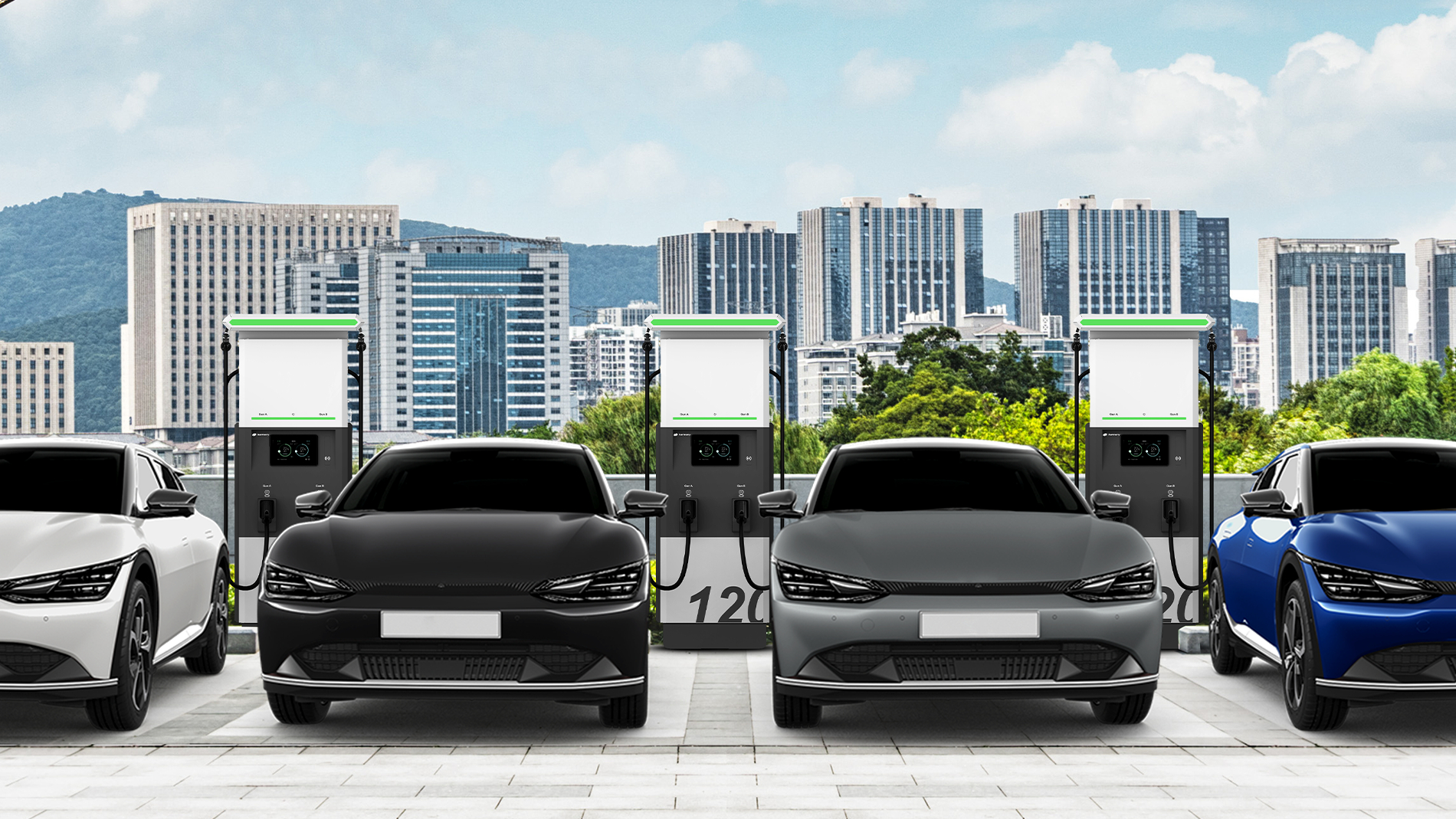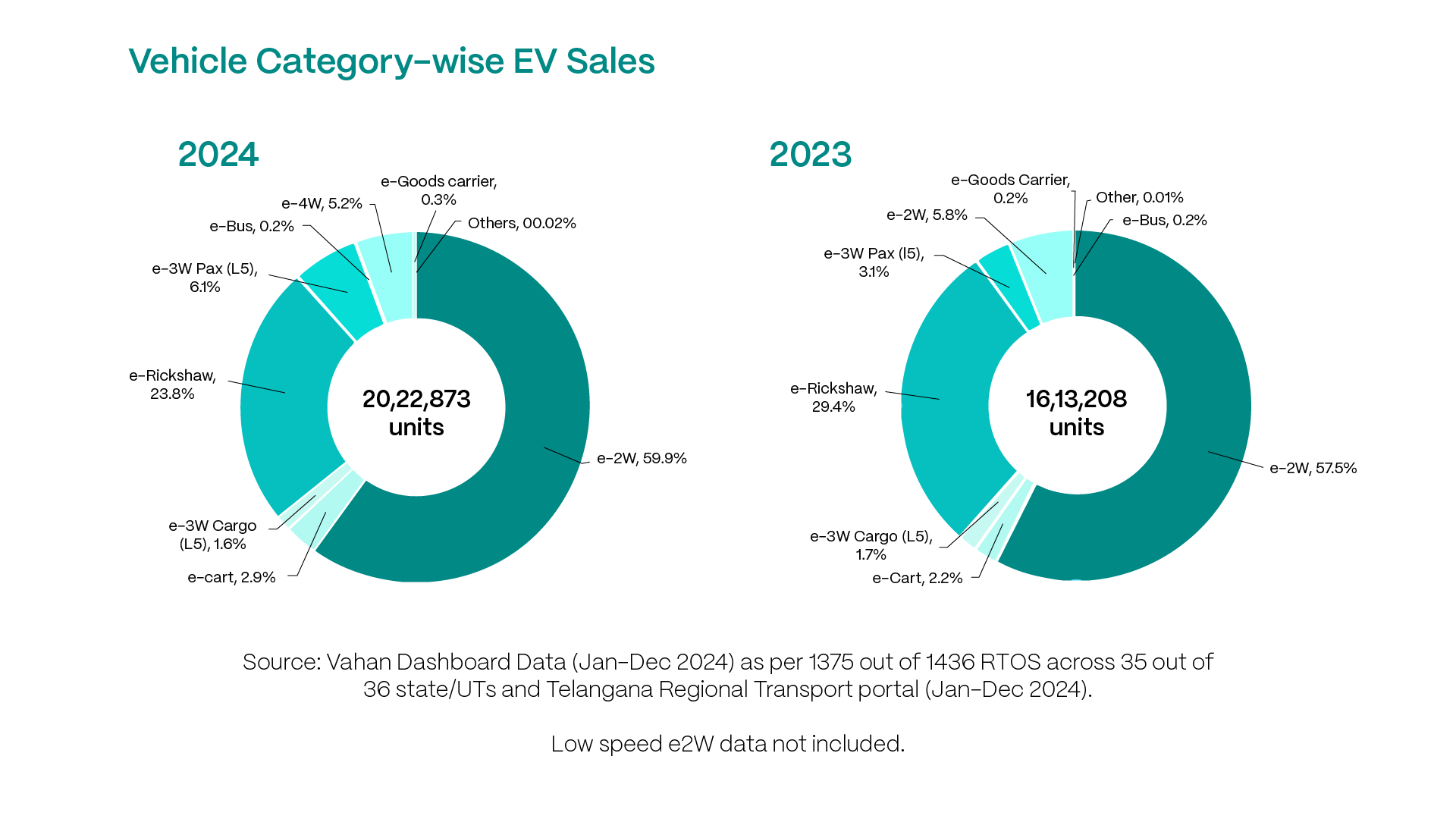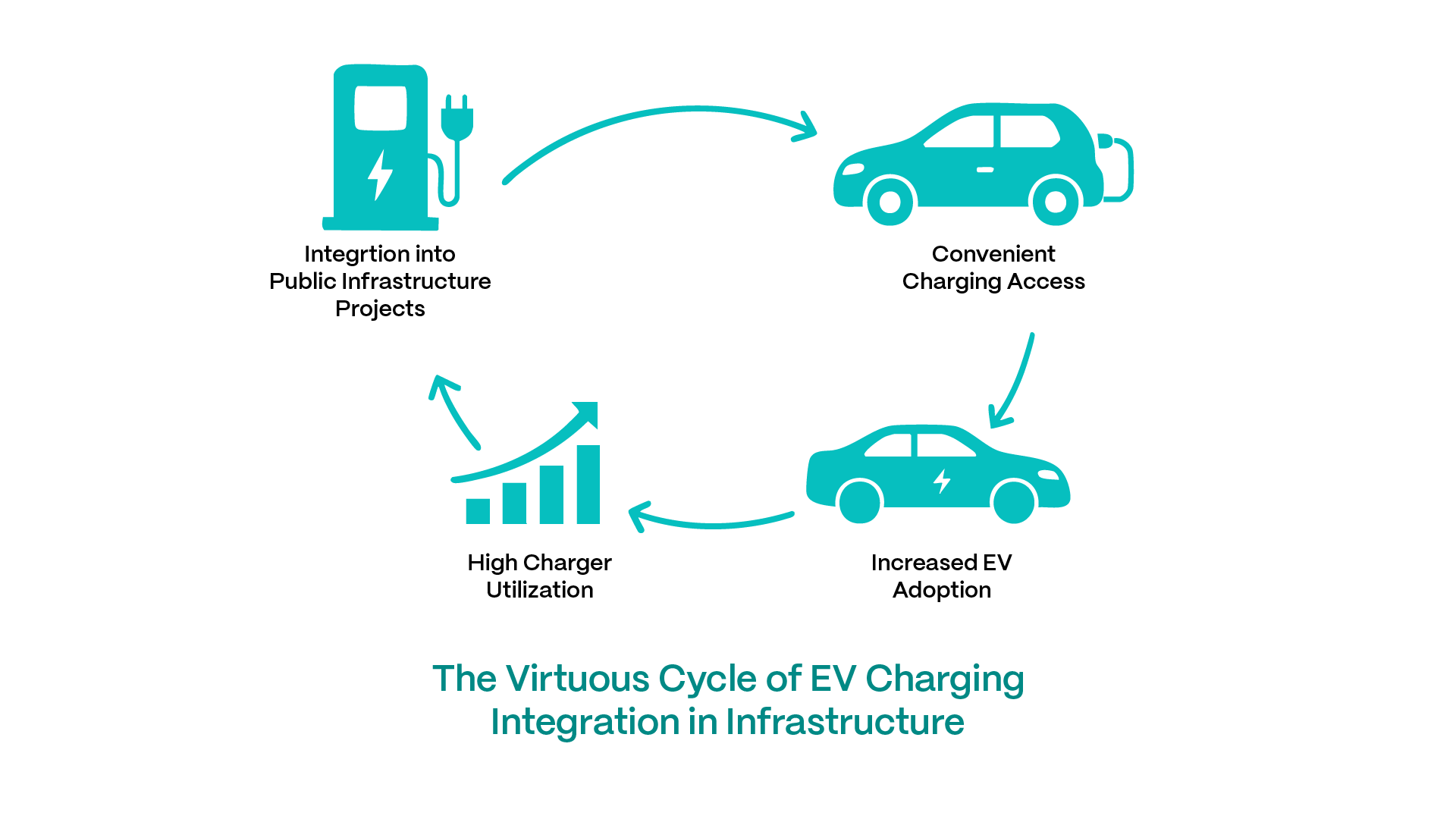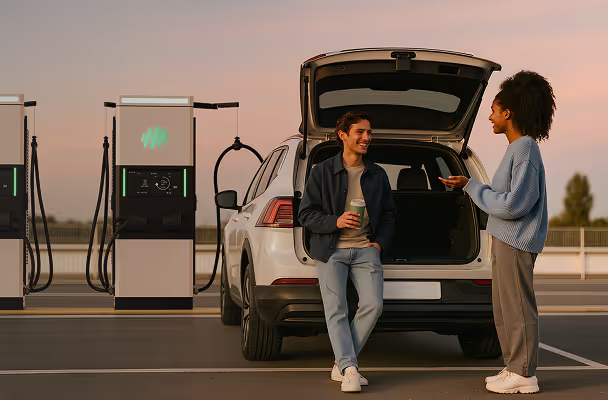The EV Opportunity Hiding in India’s Infrastructure Plans

If you are an EV enthusiast, or a CPO, and have been following the news, here’s a statement you would have listened to:
“Electric Vehicle Charging Stations are to be provided by the developer as part of the Wayside Amenities (WSAs) being awarded by the National Highways Authority of India (NHAI).” For an outside in perspective, it means that it is mandated by the NHAI that public convenience hubs along highways that include toilets, food courts etc, must have EV charging stations within that facility. While the mandate is positive news for India’s EV charging infrastructure and adoption, in this line lies one of the most significant shifts in how India is planning its infrastructure for the future.
In simple terms, every time a new pit stop is planned on a national highway, it must now include EV charging stations. It introduces an idea of actively building an EV-friendly and future-ready infrastructure from the ground up.
What does this move mean, and what does it unlock for Charge Point Operators, and why it might just be one of the smartest ways to fast-track EV adoption and charging infrastructure in India? Let’s find out in today’s blog.
India’s development goals are ambitious
India is on the move — quite literally. From highways to smart cities, the pace of development is undeniable.
India’s civil infrastructure is moving fast. Covering highways to smart cities, the scale and speed of infrastructure development is quite unprecedented.
For example, the Indian government has set targets to build large networks of highways and high-speed corridors, with the targets for national highway and expressway construction in the near term are generally around 10,000 km specifically for access-controlled highways and ring roads alone. It's a fundamental re-engineering of India’s mobility and access landscape.
India’s automotive sector is already among the largest globally. EV sales are growing at a steady pace as well.

With targets for 30% of new private vehicles, 70% commercial vehicles, and 80% two- and three-wheelers to go electric by 2030, our ambitions are clear.
But achieving them requires more than vehicles and incentives. So what does it require?
India’s EV story needs a stronger EV Charging Infrastructure backbone
The current number of EV charging stations is in a growing phase to meet the rising EV wave. As of today, India does have over 25,000 public EV charging stations, and the EV-to-public charger ratio stands around 135:1. This situation has been created due to the rapid surge in EV sales. To make this ratio favorable, it is estimated that at least 1.3 million public EV chargers will be needed by 2030 to support the projected EV growth, a 100-fold increase in less than a decade. But why are we focusing so much on electric vehicle charging?
In a recent survey by Deloitte, 39% of ICE vehicle owners said that long charging times were their primary deterrent in buying an EV. 38% cited the lack of reliable charging stations as the reason. Government data from 2022 indicates that 15-20% potential EV sales didn’t go through, because buyers were not confident about charging being easily available. Clearly, EV charging infrastructure is the deciding factor when it comes to the success of EVs.
There is only one way to solve this issue. Account for requirements pertaining to EV charging infrastructure, in all development projects, at the planning stage itself.
This involves integrating necessary power infrastructure and creating dedicated space for EV charging in:
- Roads (from highways to small streets): Having an EV charger every 40-60km eliminates range anxiety and makes EVs a practical choice for daily usage, given its lower charging costs.
- Workplaces: Office campuses and IT parks with dedicated EV parking/charging spots enable commuters to charge while at work. This not only benefits employees but can count towards corporate sustainability goals.
- Residences: Overnight home charging is convenient and cheap. Including it in new residential projects will be crucial as personal EV ownership grows.
- Recreational facilities: Shopping malls, multiplexes, hotels, restaurants, and tourist attractions should plan for EV charging stations in their parking areas. This can motivate drivers into using these facilities while their car charges. The boring charging time can then turn into dwell time that benefits businesses.
- Essential/Emergency facilities: Hospitals, schools, fire stations, police stations and government buildings should also have EV charging points for both emergency and general use. If planned ahead, these locations can be equipped with the necessary electrical infrastructure to carry out EV charging. Tech-forward EV charging solutions, like Battery-booster EV chargers, can actually act as power backups to keep critical services running in case of grid outages.
This assimilation is exactly what is driving EV success globally
- China, the leader in this space, was able to deploy 14.4 million charging points, and install as high as 760,000 public DC fast chargers by the end of 2023 through proactive government planning, making their Charger:EV ratio one of the best in the world.
- The EU mandated DC fast chargers at least every 60 km on core highways and required all new buildings and parking lots to be pre-wired for EV chargers, which resulted in a 40% growth in charging network in just 1 year.
- In 2021, the US granted funds to every state to install fast chargers (at least 150 kW) every 50 miles along designated highways, with at least 4 ports per site and 97%+ uptime, which resulted in groundwork being completed in all 50 states by 2023.
- In India, the Ministry of Housing and Urban Affairs revised the Model Building byelaws to mandate 20% of parking capacity in new residential and commercial buildings to be EV-ready. States like Delhi and Maharashtra that adopted this, now lead India’s EV market. Policies like FAME-II that focused on deploying public EV chargers in strategic locations became key in kickstarting early sales of EVs.

Thinking of EV charging infrastructure while planning a project benefits everyone
Proactively assimilating EV charging infrastructure, in the planning stage of new projects, is a strategy that creates a win-win situation for all stakeholders.
- It enables higher Utilization and revenue for Charge Point Operators (CPOs): Convenient and reliable chargers lead to more EVs on the road, which lead to more charging sessions and more revenue for CPOs. Not to mention the other avenues of income that open up through branding/advertisement and utility services at EV charging stations. In the long run, a well-utilized charging network is financially sustainable without needing continuous subsidies.
- It creates appreciation of assets for Real-estate developers: Global trends show that not only do EV-ready properties get sold quicker, they also sell at higher prices. According to JLL, the price difference is 2-5% in India, which can mean lakhs, or even crores in profit.
- It leads to lowered carbon emissions: Cleaner air in the cities. Less mining and burning of fossil fuels, less deforestation. This directly translates into healthier citizens and the ecosystem.
- It supports broader national interests: Increased EV adoption means lower dependence on oil imports. This can directly reduce domestic inflation and cement India’s energy-independence internationally. The growth of the EV industry in India can create new export opportunities as well, establishing India as a global leader in the transport segment.
EV charging isn’t just a utility. It’s an opportunity. As India expands its roads, builds its smart cities, and electrifies its mobility, EV infrastructure must move from reactive installation to proactive planning.
Explore our future–ready EV chargers here.
FAQs:
Q: Why is integrating EV charging stations into India’s infrastructure plans important?
A: Integrating EV chargers during infrastructure planning ensures convenience, supports high EV adoption, prevents costly retrofits, and aligns with India’s clean mobility goals, facilitating a seamless transition to electric vehicles.
Q: What challenges does India face in incorporating EV charging into its infrastructure?
A: Key challenges include the vast population and geographic scale, insufficient early planning, grid capacity constraints, and the need to address range anxiety by ensuring widespread availability of charging points.
Q: How do Wayside Amenities relate to EV charging infrastructure?
A: Wayside Amenities (WSAs) awarded by the National Highways Authority of India (NHAI) mandate developers to provide EV charging stations, thereby enabling charging accessibility on highways and supporting long-distance EV travel.
Q: What benefits do tech-forward chargers offer in the context of India’s EV infrastructure?
A: Tech-forward chargers bring efficient, robust, and scalable solutions that reduce installation time, increase reliability, accommodate high usage, and help future-proof the EV charging network.
Q: How can early EV charging infrastructure planning benefit Charge Point Operators (CPOs)?
A: Early planning leads to better site selection, higher user convenience, increased charger utilization, and ultimately higher revenue and profitability for CPOs through consistent demand and additional revenue sources.
Bibliography
- Ministry of Power (2023). Guidelines & Standards for EV Charging Infrastructure. Retrieved from powermin.gov.in
- Ministry of Road Transport & Highways (2024). Policy on EV Charging in National Highways and WSAs. morth.nic.in
- Ministry of Housing and Urban Affairs (2020). Model Building Bye-laws, EV Edition. mohua.gov.in
- NITI Aayog & RMI (2020). India’s Electric Mobility Transformation. niti.gov.in
- IEEFA (2024). Upgrading India’s Public EV Charging Experience. ieefa.org
- JLL India (2024). EV-Enabled Real Estate Trends Report
- BCG (2023). The Future of Electric Mobility in India
- Deloitte India (2023). EV Adoption Trends and Infrastructure Bottlenecks
- Government of Maharashtra (2024). EV Policy – Tax Incentives for Charging Infra
- International Energy Agency (IEA) (2024). Global EV Outlook
- Savills India (2023). Green Building and EV Integration Study
- Vasudha Foundation (2023). Data Transparency in EV Charging Deployment
- NREL (2022). Best Practices for Charging in Commercial & Retail Spaces
- Press Information Bureau (2024). EV Budget Allocations and Infrastructure Push
Frequently Asked Questions
Lorem ipsum dolor sit amet, consectetur adipiscing elit, sed do eiusmod tempor incididunt ut labore et dolore magna aliqua. Ut enim ad minim veniam, quis nostrud exercitation ullamco laboris nisi ut aliquip ex ea commodo consequat. Duis aute irure dolor in reprehenderit in voluptate velit esse.
Lorem ipsum dolor sit amet, consectetur adipiscing elit, sed do eiusmod tempor incididunt ut labore et dolore magna aliqua. Ut enim ad minim veniam, quis nostrud exercitation ullamco laboris nisi ut aliquip ex ea commodo consequat. Duis aute irure dolor in reprehenderit in voluptate velit esse.
Lorem ipsum dolor sit amet, consectetur adipiscing elit, sed do eiusmod tempor incididunt ut labore et dolore magna aliqua. Ut enim ad minim veniam, quis nostrud exercitation ullamco laboris nisi ut aliquip ex ea commodo consequat. Duis aute irure dolor in reprehenderit in voluptate velit esse.
Lorem ipsum dolor sit amet, consectetur adipiscing elit, sed do eiusmod tempor incididunt ut labore et dolore magna aliqua. Ut enim ad minim veniam, quis nostrud exercitation ullamco laboris nisi ut aliquip ex ea commodo consequat. Duis aute irure dolor in reprehenderit in voluptate velit esse.
Lorem ipsum dolor sit amet, consectetur adipiscing elit, sed do eiusmod tempor incididunt ut labore et dolore magna aliqua. Ut enim ad minim veniam, quis nostrud exercitation ullamco laboris nisi ut aliquip ex ea commodo consequat. Duis aute irure dolor in reprehenderit in voluptate velit esse.




